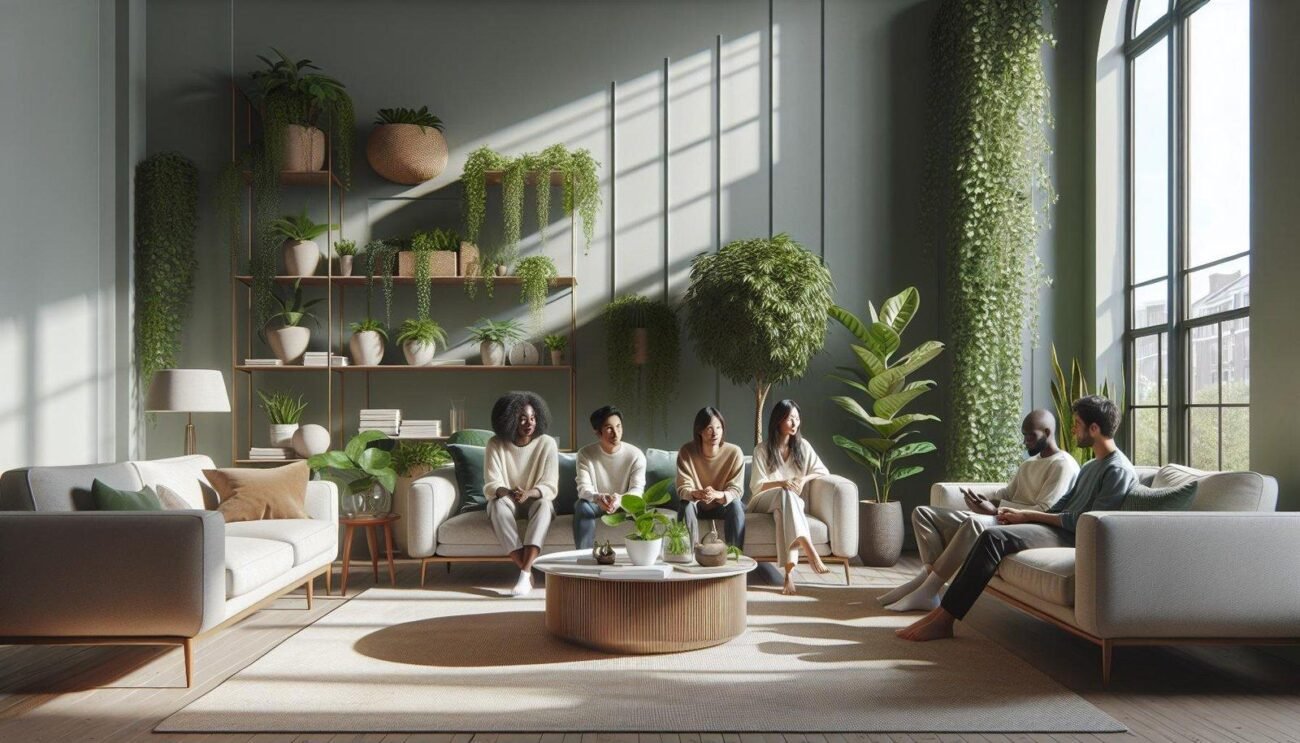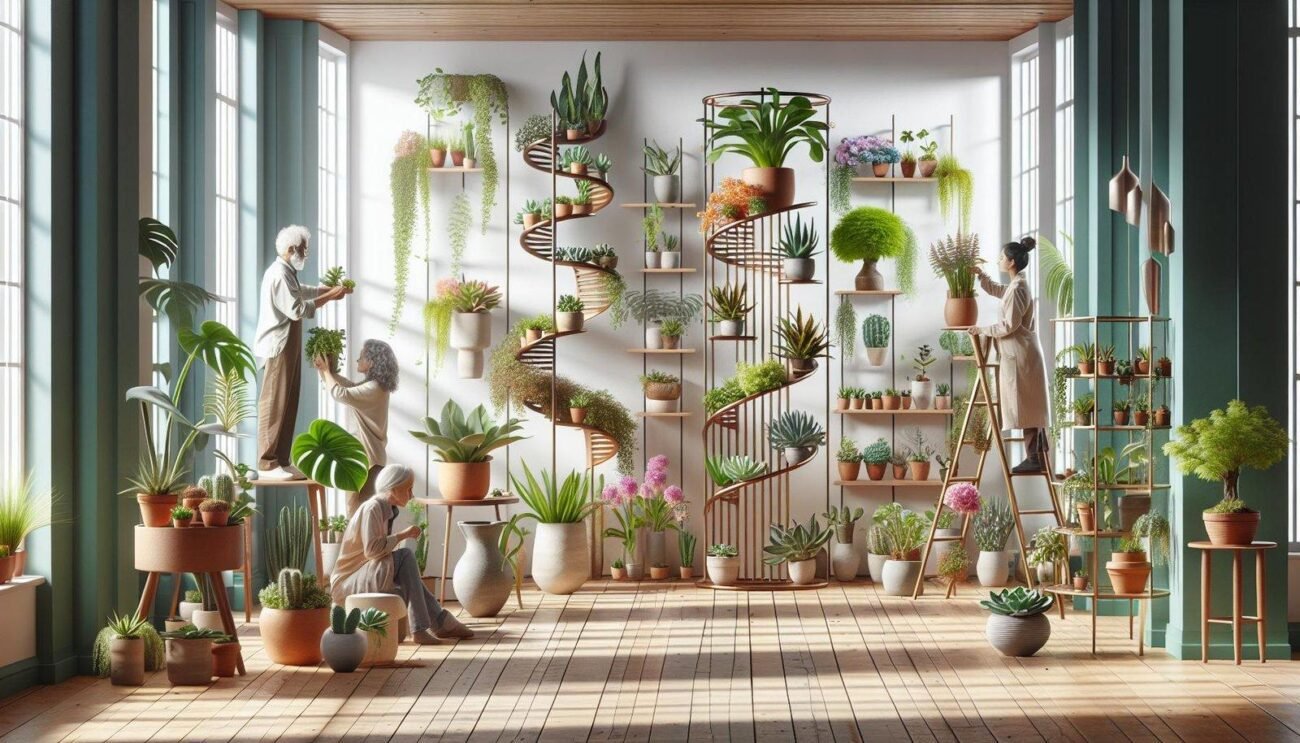What are some plants that can tolerate low light levels for living room decor?
Creating a lush, green oasis in your living room doesn’t always require sunlight streaming through large windows. If your space is limited in natural light,don’t worry—there are plenty of beautiful,resilient plants that can thrive in low-light conditions. Incorporating these low-light-tolerant plants into your living room decor not only enhances your home’s aesthetic but also improves air quality and brings a touch of nature indoors. In this article, we’ll explore some of the best plants that flourish with minimal sunlight, helping you choose the perfect greenery to brighten up even the shadiest corners of your living space.
Plants Perfect for Shady Corners and Dim Spaces
When you’re working with limited sunlight, choosing the right plant can transform your living space without demanding constant attention. Snake plants (sansevieria) thrive in dim settings and bring a sleek vertical element,while their tough leaves require just occasional watering. Similarly,ZZ plants (Zamioculcas zamiifolia) are champions of adaptability,sporting glossy leaves that brighten any corner and flourish even under fluorescent lighting.
for those seeking lush greenery with a softer texture, peace lilies offer stunning white blooms even in low light, along with air-purifying benefits. Philodendrons are another excellent choice, their trailing vines adding a dynamic look to shelves or hanging pots without demanding much sun. Below is a fast guide to some favored shade-tolerant plants perfect for your indoor oasis:
| Plant | watering Frequency | Light Requirement | Special Feature |
|---|---|---|---|
| Snake Plant | Every 2-3 weeks | Low to indirect | Air purifier |
| ZZ Plant | Every 2-3 weeks | Low to bright indirect | Drought tolerant |
| Peace Lily | Once a week | Low to medium indirect | Flowering |
| Philodendron | Once a week | Low to indirect | Vining growth |
Understanding Light Requirements for Indoor Plants
Indoor plants thrive when their light needs are met, but not every room offers abundant sunlight. Low light doesn’t mean no light; instead, it refers to shaded areas where direct sunlight rarely reaches. Understanding this distinction can help you choose plants that not only survive but also flourish in dimmer corners of your living room. Plants adapted to low light typically have larger or darker green leaves that efficiently absorb limited sunlight. Avoid placing them in entirely dark areas, but rest assured, subtle indirect light is sufficient for these green companions.
Here are a few key traits to look for in low light tolerant plants:
- Dark green foliage: Indicates high chlorophyll content for better photosynthesis in lower light.
- Slow growth rate: These plants conserve energy and require less intense light.
- Tolerant of indoor conditions: They adapt well to typical indoor temperature and humidity.
| Plant | Light Preference | Care Tips |
|---|---|---|
| Snake Plant | Low to indirect light | Water sparingly, well-drained soil |
| ZZ Plant | Low to moderate indirect light | Allow soil to dry between watering |
| Peace Lily | Low light but avoid shade | Keep soil moist, mist occasionally |
Top Low Light Plants that Thrive in Living Rooms
Transform your living room into a lush, vibrant oasis without worrying about sunlight by choosing plants that flourish in low-light environments. These resilient greenery options not only survive but actually thrive with minimal natural light,making them perfect for spaces away from windows.Consider adding a Snake Plant (Sansevieria), renowned for its air-purifying qualities and upright, architectural leaves that suit modern decor. Another excellent choice is the ZZ Plant (Zamioculcas zamiifolia), which boasts waxy, dark green leaves and requires very little maintenance—ideal for beginners or busy plant parents.
for a bit more texture, Philodendron varieties work wonderfully in dim corners and bring a tropical vibe with their heart-shaped foliage. If you’re aiming for something trailing, Pothos is unrivaled in its adaptability and robust growth habit, effortlessly cascading from shelves or hanging pots. These plants not only beautify your space but also enhance air quality, helping create a healthier indoor atmosphere.
| Plant Name | Light Needs | Watering Frequency | Unique Feature |
|---|---|---|---|
| Snake Plant | Low to moderate | Every 2-3 weeks | Air purifier |
| ZZ Plant | Low | Every 3-4 weeks | Waxy leaves |
| Philodendron | Low to medium | Weekly | Heart-shaped leaves |
| Pothos | Low to medium | Weekly | Trailing vines |
Care Tips to Keep Your Low Light Plants Healthy and Happy
To ensure your low light plants thrive, consistency is key.While these plants can tolerate lower light conditions, they still need a routine watering schedule—typically allowing the soil to dry out halfway between waterings. Avoid overwatering, as the lack of direct sunlight reduces evaporation, increasing the risk of root rot. Additionally, occasional misting helps maintain the humidity levels they appreciate, especially in air-conditioned or heated rooms that tend to dry out the air.
Feeding your plants during their growing season with a diluted, balanced fertilizer encourages healthy foliage and growth. Rotate the pots every few weeks to promote even light exposure and prevent lopsided growth. Also, dust leaves gently with a soft cloth to maximize photosynthesis. Below is a quick reference table of care tips for common low light houseplants to keep handy:
| Plant | Watering Frequency | Humidity | Fertilization |
|---|---|---|---|
| Snake Plant | Every 2-3 weeks | Low | Monthly (spring/summer) |
| ZZ plant | Every 2-3 weeks | Moderate | Bi-monthly (spring/summer) |
| Philodendron | Weekly | High | Monthly (spring/summer) |
In Conclusion
Incorporating low-light tolerant plants into your living room decor is a marvelous way to bring nature indoors, even in spaces where sunlight is limited. Plants like snake plants, pothos, and ZZ plants not only thrive in dimmer conditions but also add vibrant greenery that can enhance your home’s ambiance. By choosing the right varieties, you can enjoy the benefits of indoor gardening without the hassle of constant sun exposure. So go ahead, pick a few of these hardy plants, and watch your living space come alive with effortless natural beauty.











